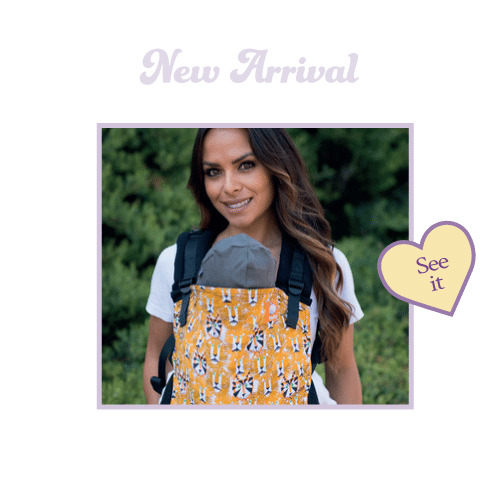I’ve been lucky enough to speak with many babywearers in person about the physiologic newborn position, and how to avoid putting a newborn baby into a spread squat, by keeping their knees, hips, and feet all in a near straight parallel vertical lines, with knees above bum.
Je Porte Mon Bebe has provided us with this fantastic illustration of how the physiologic newborn position looks with baby inside a wrap.
With a baby under around 3-4 months, the position in the photo above is what you want to see in any type of carrier. It is possible to achieve this body posture in a ring sling, wrap, or meh dai, but much more difficult in a buckle carrier, which is just one of the reasons why I generally suggest that buckle carriers are best saved for after baby has more torso control and naturally assumes a squat position on his own, when picked up. This developmental milestone typically occurs around 4 months old.
Some time around 4 months, when you lift him to your body in-arms, baby will span your body, and grab onto your torso with his legs spread. This is a good indication that your baby’s pelvis and spine are developmentally ready to be worn in a spread squat position. The position of your baby in a carrier should always mirror a developmentally appropriate position in which you would carry your baby in-arms.
 The photo above is a perfect example of the spread squat position with a baby who is developmentally ready. Baby has strong neck and torso control, sits much more upright in the wrap, with less of a curve in the spine, and the pelvis is naturally more open, with the legs easily spanning the mother’s torso. Many babies will gradually shift toward this position as they approach 4 months, and most by 5 months. This baby is likely beginning to push up on hands and knees, and may be doing some “tripod” sitting.
The photo above is a perfect example of the spread squat position with a baby who is developmentally ready. Baby has strong neck and torso control, sits much more upright in the wrap, with less of a curve in the spine, and the pelvis is naturally more open, with the legs easily spanning the mother’s torso. Many babies will gradually shift toward this position as they approach 4 months, and most by 5 months. This baby is likely beginning to push up on hands and knees, and may be doing some “tripod” sitting.
Physical developmental milestones can always help guide us toward the appropriate carriers and positions for a baby. Wearing a carrier which is comfortable for both you and your baby will mean more babywearing, which in turn fosters a more secure bond. That relationship is carried down the road and will benefit you both for years to come, even when your baby is too big for you to lift.







